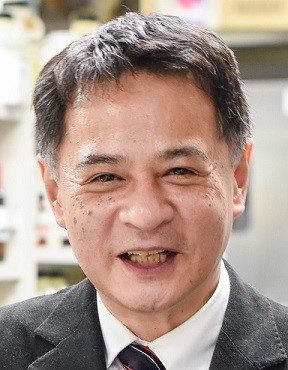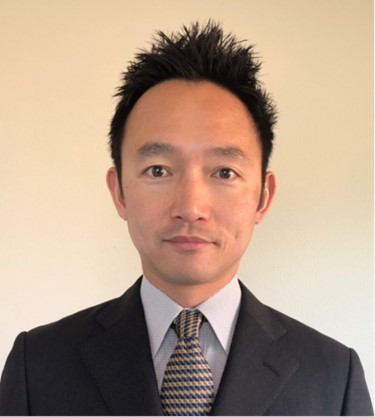
Prof. Sakai
General goal and approaches of our lab
The general goal of our lab is the 3D organization of cultured
organ/tissue-derived cells such as liver or pancreas cells in various
scales for regenerative medicine and cell-based assay for drug or
chemical screenings without having to resort to animal testing. In our
body,
- Cells are hierarchically organized at a very high cell density
- The vascular system consistently supplies nutrients and removes
waste/metabolites, thus attaining very high per-volume-based
functionality.
However, full arrangement of such vascular systems in vitro is a
challenging task to achieve due to the complexity of to simultaneously
optimizing 3D high-density cellular organization and mass transfer
between the cells and flow channels.
The most important step is to overcome the conflicting issues in
various scales required by relevant applications. I believe academic
knowledge of chemical engineering will give the basis for the
optimization. For example, if we intend to organize large tissue
equivalents for implantation therapy, the tissue should at least be
arranged with a 3D branching/joining flow channel network as in vivo
vasculature and the channels should be perfused with suitable culture
medium containing oxygen carriers. Also, in order to make a small
tissue for cell-based assays, we have to organize the cells to create
an environment that the cells reorganize as their original tissues. At
the same time, we need to pay special attention to mass transfers
between the cells and the incubation medium, so that various kinetic
parameters concerning metabolism are the same as those obtained in
vivo. Chemical engineering undeniably gives a firm basis not only for
analysis/description of these issues but also for further optimization
and designing the suitable tissue-based devices/systems in various
scales.
In order to realize cultured cell-based therapy or assays, we need to
integrate knowledge and technologies from various disciplines in a
well-balanced manner; that is, basic biology of growth,
differentiation and maturation of human stem cells or organ
progenitors, advanced engineering such as micropatterning,
microfluidics, microfabrication or biomaterials, and medical or
pharmaceutical knowledge about diseases and responses against therapy
or administration of drugs. Due to the increasing complexity and
versatility of current science and engineering, it is difficult to
integrate the necessary technologies in one laboratory. We are
therefore actively organizing and participating in collaborations with
various research groups. To efficiently perform such
objective-oriented integration, we use the objective-oriented frame of
mind of chemical engineering. For example, we first set a final goal,
then layout all the necessary knowledge and technologies with
appropriate time points, and finally we implement the research and
development along the roadmap. By doing this, the time for achieving
the goal is minimized and even if some novel but unanticipated
innovation emerges in related areas, we can judge the feasibility of
relevant innovation. Even for regenerative medicine and development of
cell-based assays, setting our basis on the chemical engineering
discipline is important. Indeed, cell-culture related chemical
engineering encompasses the basic biological findings and their
applications via advanced engineering technologies.
When engineers do research on human body systems, there are three
typical approaches: from metabolism/biochemistry (the target is
endoderm-derived organs), mechanics (mesoderm-derived organs) and
informatics (ectoderm-derived organs). Because our main concerns are
transport/metabolism-related aspect of the human body, our tentative
targets are liver, pancreas or kidney for regenerative medicine and
small intestine, lung, liver or kidney for cell-based assays. The
typical research approach is as follows; first, design tissues in terms
of cell-to-cell interaction and mass transfer according to the
requirements of the relevant application, then culture stem/progenitor
cells, and finally complete the devices/systems using advanced
engineering technologies.
We welcome students or researches who have interest in 3D organ
engineering. Since our lab participates in education and research at
graduate levels (both master and doctoral courses), we seek motivated
students not only from Tokyo University but also other universities all
over the world. We also welcome postdoctoral researchers according to
the financial situation. If you are interested in our lab, feel free to
contact me (sakaiyasu[at]chemsys.t.u-tokyo.ac.jp) or Dr. Nishikawa
(masaki[at]chemsys.t.u-tokyo.ac.jp), the research associate of our lab,
and visit our lab. We can accept students from two departments in the
Graduate School of Engineering; the Department of Chemical System
Engineering and the Department of Bioengineering. Although there are no
obvious differences in the thesis research, the curriculums are
completely different, so please choose your department
carefully.
Because we focus on the best integration of knowledge and technologies
toward the final goal, I ask lab members to adopt an objective-oriented
way of thinking and to constantly acquire knowledge about biosystems.
Once you adopt such an attitude, you do not have to be afraid even if
you happen to hold a completely different position in the future.



